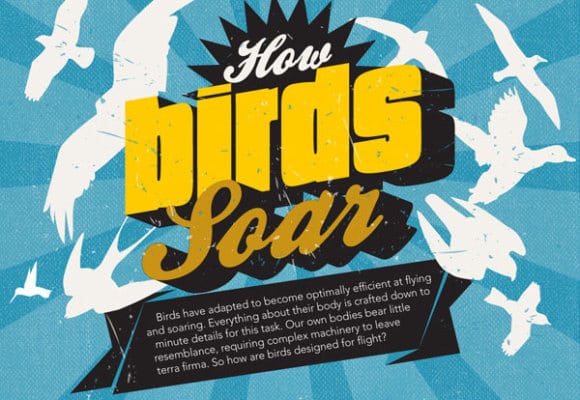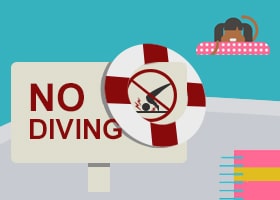 We’ve all seen the majestic eagle soaring by overhead, or the lithe osprey catching fish at the river, and probably felt awe at what it must feel like to be so free, gliding through the air as easily as breathing. Even watching pigeons in the city or seagulls by the beach can inspire a wondrous curiosity as to what it must be like to fly. It’s no wonder that humans have such a fascination with birds – they are comfortable in the realm of clouds that we have had to work very hard to conquer. And even now, our steel machineries of flight are worlds less graceful than the effortless diving of a red-tailed hawk. Humans have never been at home in the air above the trees; birds spin and soar like we only wish we could. Have you ever wondered what it takes to ride the wind as birds do? Have you ever gone birdwatching and marveled at the acrobatics of birds of prey, been lulled to sleep by the cooing of doves, or tried to study the minute movements of a hummingbird in the garden? The following infographic will surely interest the bird-lover inside of every one of us. It describes how birds are designed for flight, and even scrolling through these images is sure to evoke that long-held human desire to be able to spread our wings and fly as the birds do. For those truly passionate about our winged friends, ornithology is a career path specifically devoted to birds, whose branch of study could lead to a career as a researcher, veterinary assistant, zoologist or environmentalist. Or as a birdwatcher or casual curiosity lover, it may be enough to simply appreciate the beauty in the design of these magnificent creatures of flight. Click Image to Enlarge
We’ve all seen the majestic eagle soaring by overhead, or the lithe osprey catching fish at the river, and probably felt awe at what it must feel like to be so free, gliding through the air as easily as breathing. Even watching pigeons in the city or seagulls by the beach can inspire a wondrous curiosity as to what it must be like to fly. It’s no wonder that humans have such a fascination with birds – they are comfortable in the realm of clouds that we have had to work very hard to conquer. And even now, our steel machineries of flight are worlds less graceful than the effortless diving of a red-tailed hawk. Humans have never been at home in the air above the trees; birds spin and soar like we only wish we could. Have you ever wondered what it takes to ride the wind as birds do? Have you ever gone birdwatching and marveled at the acrobatics of birds of prey, been lulled to sleep by the cooing of doves, or tried to study the minute movements of a hummingbird in the garden? The following infographic will surely interest the bird-lover inside of every one of us. It describes how birds are designed for flight, and even scrolling through these images is sure to evoke that long-held human desire to be able to spread our wings and fly as the birds do. For those truly passionate about our winged friends, ornithology is a career path specifically devoted to birds, whose branch of study could lead to a career as a researcher, veterinary assistant, zoologist or environmentalist. Or as a birdwatcher or casual curiosity lover, it may be enough to simply appreciate the beauty in the design of these magnificent creatures of flight. Click Image to Enlarge  Via. Carrington College Veterinary Assistant Program
Via. Carrington College Veterinary Assistant Program



